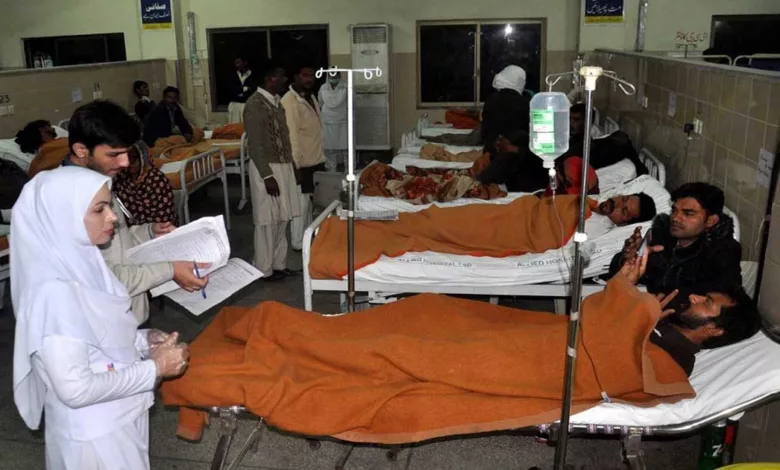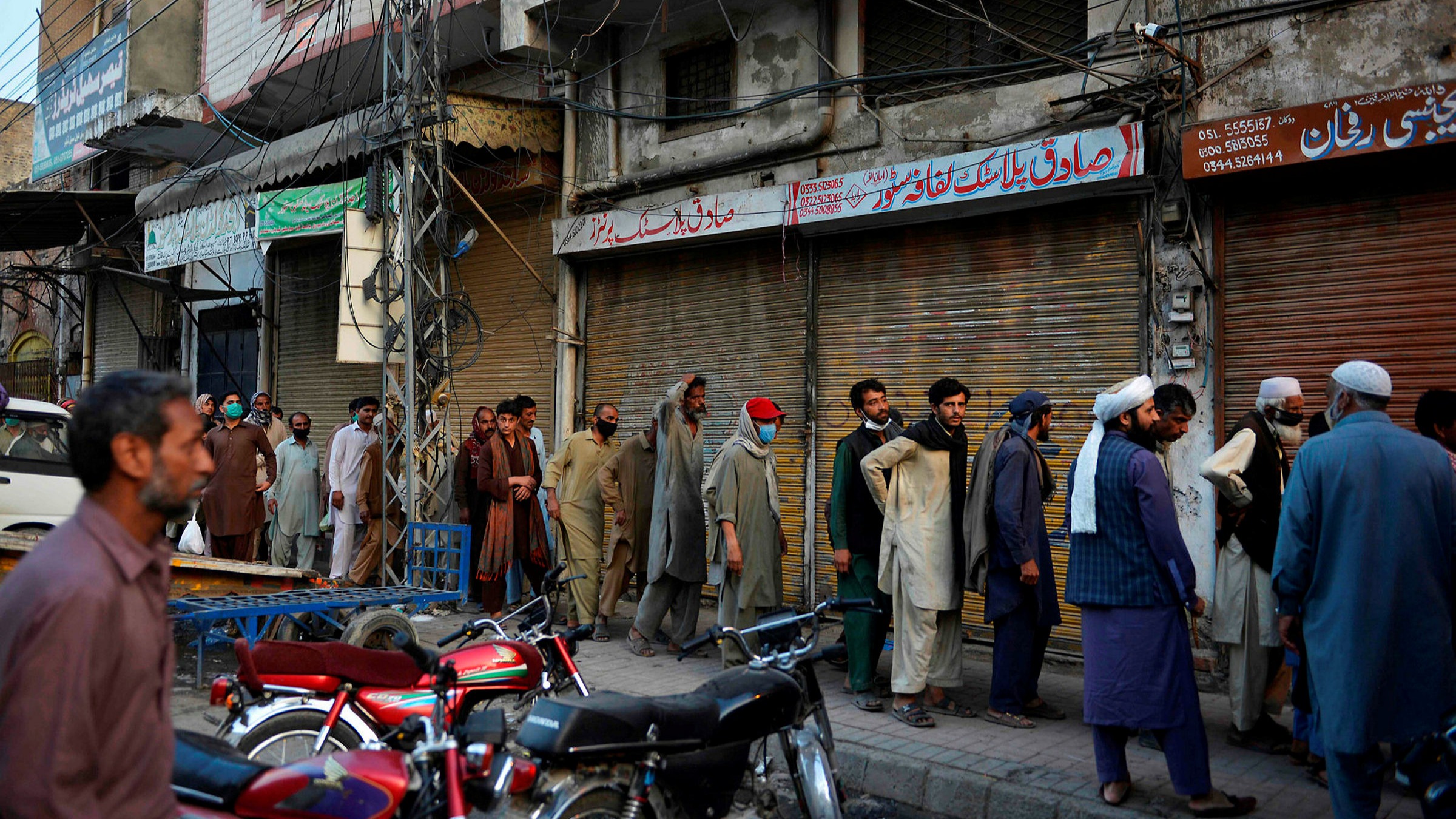Pakistan Is Short Of Crucial Drugs Like Insulin, Disprin, and Other Medicines Amid The Economic Crisis Of The Country.
Reports indicate that the country's healthcare system has been severely impacted and that the country is having trouble getting essential medicines.

Pakistan Is Short Of Crucial Drugs Like Insulin, Disprin, and Other Medicines Amid The Economic Crisis Of The Country.
Despite the fact that Pakistan’s external debt servicing obligation for the current fiscal year 2022–2023 is over $23 billion, of which $6 billion has been repaid and $4 billion has been rolled over, reports indicate that the country’s healthcare system has been severely impacted and that the country is having trouble getting essential medicines.
As it struggles with a devastating economic crisis, Pakistan is in desperate need of money. The country’s government has already stopped most imports, including those of pharmaceuticals, due to its severely low Foreign Exchange reserves. Patients are having difficulty accessing Necessary Medications as a result of the current financial crisis in Pakistan’s healthcare system.
The country’s ability to import the necessary medications or the Active Pharmaceutical Ingredients (API) utilized in local production has been severely hampered by a low Foreign Exchange Reserve.
The regional pharmaceutical producers have been forced to reduce their output. As a result, there are medicine and medical equipment shortages, which leave patients in pain and prevent doctors from performing surgery.
According to local media reports, Pakistan’s operating rooms only have a two-week supply of anaesthetics on hand. For the uninitiated, anaesthetics is important for delicate procedures like heart, cancer, and kidney surgery.
Pakistan is frequently enmeshed in issues. However, a slew of recent international crises, like the Russian invasion of Ukraine and the Taliban takeover of Afghanistan, have exposed and worsened the country’s political, economic, and security cracks.

If the current situation continues, there is a high possibility that jobs will be lost at Pakistan’s hospitals, which might make the current crisis even worse.
According to information, about 95% of the medications produced in Pakistan need the import of raw ingredients from other countries, particularly China and India.
Most medicine producers are unable to obtain the imported parts detained at the Karachi port because of the lack of cash in the banking system.
In the meantime, the pharmaceutical industry asserts that the cost of producing medications is steadily rising, citing increases in fuel prices, Transportation Expenses, and the severe depreciation of the Pakistani rupee.
The Pakistan Medical Association (PMA) requested government assistance in order to prevent the situation from becoming a catastrophe. Instead of acting immediately, the authorities are still trying to determine the extent of the deficit.
The vendors of drugs as this was going on, drug merchants in Punjab, Pakistan, stated that government survey teams visited the area to ascertain the extent of the lack of needed medications.
The bulk of customers is being impacted by the scarcity of the basic yet important drugs, according to the merchants. These drugs include, among others, Panadol, Insulin, Brufen, Disprin, Calpol, Tegral, Nimesulide, Hepamerz, Buscopan, and Rivotril.
The drug manufacturing sector has accused the banking system of being to blame for the crisis facing the healthcare system by claiming that commercial banks are refusing to provide new Letters of Credit (LCs) for its imports.

Due to banks’ refusal to give letters of credit to clear their goods, 12,000 Shipping Containers full of merchandise had accumulated in Pakistani ports by January 23rd, according to a Senior Port official who talked on the condition of anonymity owing to the sensitivity of the situation.
These letters essentially authorize the State Bank of Pakistan to transfer payments made in US dollars.
The All Pakistan Merchants Association’s president, Ajmal Baloch, claims that more than 10 million traders are on the verge of financial and Economic Catastrophe. Pharmaceuticals, cosmetics, medical supplies, industrial raw materials, and raw materials are stalled.
According to a report, the Central Head of the Pakistan Pharmaceutical Manufacturers’ Association (PPMA), Syed Farooq Bukhari, warned about the “worst medicine crisis” if the import restriction remained in place.
If existing policies (the import ban) are maintained for the next four to five weeks, the country would experience its biggest medication crisis, according to Syed Farooq Bukhari.

According to Maleeha Lodhi, a former Pakistani ambassador to the U.S. and the U.N., this is the worst economic crisis Pakistan has seen in decades.
When companies struggled to import raw materials, reports of job losses and industrial closures started to surface. One major local automaker stated it was suspending operations for two weeks because it lacked both the inventory and the demand.
Ammar Khan, a senior scholar at the South Asia Center of the Atlantic Council and a non-resident economist, claims that the initial dollar issue evolved into a Supply Chain crisis, where they don’t have enough supplies to export — and literally can’t obtain additional dollars unless they export.
According to Khan, there were mounting worries that Pakistan was on the verge of default due to worries that the country might not be able to repay part of its foreign debt. The immediate worry is that Pakistan won’t be able to import important products that are needed to support its economy and feed its population.
He said Pakistan lacks the money to import goods like fuel and cooking oil. He warns that this might result in “shortages of everything imaginable, whether energy or food and contraction of the Supply Chain, leading to economic upheaval and the loss of jobs.
Khan said they estimate inflation to reach north of 30%, possibly in the hyperinflationary range. More people will be unemployed. Over the coming months, the average person won’t have much breathing room.
Nouri Wazir, a 21-year-old vendor in the Aabpara market, claims that if things become worse, he will need to borrow money to get by. He sells pine nuts from his community to pay for his computer science classes. They are arranged neatly atop an upright cardboard box. Wazir claims that he has already started missing lunch to save money. There is nowhere else to go except down.
Previously on February 24, the heavily indebted Pakistan’s Finance Minister Ishaq Dar declared that the State Bank of Pakistan had received funds from the China Development Bank totaling $700 million.
The country’s Foreign Exchange Reserves as of 17 February was $3.25 billion. Yet, a Geo News article notes that the Administration has found it challenging to accomplish this aim due to the delay in the renewal of the $6.5 billion International Monetary Fund (IMF) plan.
The News reports that by the end of February or the first week of March 2023, Pakistan plans to restructure Chinese debts totaling up to $2 billion.
Without a staff-level agreement, the Pakistani government and IMF personnel concluded the ninth review of the $6.5 billion bailout plan. The Pakistani administration believed they could persuade the IMF to execute the restrictions gradually. Yet, the IMF mission’s 10-day visit to Pakistan crushed Islamabad’s aspirations.
edited and proofread by nikita sharma




